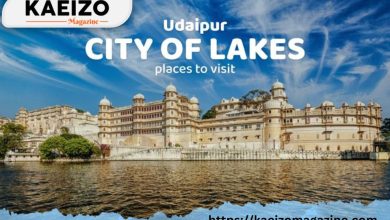Manali – Most Popular hill station

One of the most popular hill stations in Himachal. Manali is situated at 6,398 ft in the Himalayas. Located in the Kullu district of Himachal Pradesh. You can find all food options in Manali. From South India to Punjabi and Italian, Tibetan and Chinese, Manali has a large variety of food options. The mall road in Manali offers roadside food stalls and lavish restaurants. Manali is also famous for adventure sports like skiing, hiking, mountaineering, paragliding, rafting.
Best Time to Visit Manali
Manali is best visited between October and June. In Manali, snowfall happens from December to February. The city is shrouded in snow during this time. One of India’s most picturesque hill towns, Manali attracts visitors all year long.
Ways to Reach Manali
Rail
Jogindernagar railway station, which is 143 kilometres away from here, is the one that is closest to Manali.
Air
The closest airport to Manali is either Bhuntar or Kullu Manali. It is around 50 kilometres away from the major cities. There are frequent flights from this airport in Bhuntar to major Indian cities like Chandigarh and Delhi.
Road
Manali, a very well-liked hill station, is connected to other significant tourist hotspots in India. In addition to private taxis and cabs, regular private and government-run buses travel to Manali. There are both regular and air-conditioned bus services.
Popular Places to visit in Manali
Hadimba Temple
Hadimba Temple, sometimes also reffered as Dhungiri temple, is a wooden temple situated in Manali, a hill station in the Indian state of Himachal Pradesh. The distance between Manali and Hadimba Devi Temple is 3kms.
A tale about Hadimba, the brother of Hidimbi and the mountain demon lord, appears in the Mahabharata. According to legend, the Pandavas lived in Himachal Pradesh for a portion of their 14-year exile, where one of their five brothers, Bhima, killed him and wed his sister.
Hadimba Temple was first constructed in 1553 AD, which is when it began to have a history. However, Raja Bahadur Singh restored the temple’s current building in 1686.
Solang Valley
Manali is 13 km away from Solang Valley, which can be accessed in 25 minutes by car or cab. One of Himachal Pradesh’s most well-known tourist spots, Solang Valley is located on the route from Manali to Rohtang. Adventure sports like skiing, paragliding, zorbing, horseback riding, ATV (all-terrain vehicles), snow scooter, mini-bunjee, grass skiing, river crossing, trekking, wall climbing, etc. are popular in Solang Valley.
One of Himachal Pradesh’s most popular tourist sites is Solang. Visitors to Rohtang Pass also go to Solang after taking a left turn at the bifurcation of Palchan Village.
A ropeway and a ski area are both present in Solang Valley. Visitors may get a panoramic view of the entire valley from Fatru, which is about 1 km above main ground, where the ropeway (gondola) transports them.
Jogini Waterfalls
Jogini Waterfall is situated in the lovely Manali Valley, about 2 kilometres from the well-known Vashisht Temple and about 3 kilometres from the busy town. In Himachal Pradesh, Jogini Falls is a stunning waterfall that is close to Vashisht Village.
This amazing waterfall pours into the Beas River in Kullu Valley from a height of 7850 feet. Goddess Jogini, who was the son of Lord Indra, has been honoured by having this waterfall named in her honour. The only way to access the Jogini Waterfalls in Himachal Pradesh is by walking, which is its most intriguing feature. Reaching the base of the waterfall requires a leisurely hour-long stroll. There are a few restaurants and lodging options along the route. This is among the best short treks in Manali to take in the local natural beauty and rural Himalayan life.
Bhrigu Lake
A high-altitude lake called Bhrigu Lake is situated in the Kullu district, around 40 kilometres from Manali. In the summer, the lake is a wonderful location to take in the view of lush fields and snow-capped mountains. It is well-known for being the spot where the revered saint Maharishi Bhrigu meditated.
You will always remember the strenuous yet rewarding journey you had to get to this breathtaking place. This hike offers various nuances of nature at various times of the year.
Museum of Himachal Culture and Folk Art
A 2 mile drive will take you to the Museum of Himachal Culture and Folk Art from Manali Bus Stand. It contains a lovely collection of regionally unique ancient and traditional heritage. The Museum promoted knowledge of Himachal’s traditional customs in addition to aiding in the preservation of its culture and art. Kids may learn a lot about the rich legacy of Manali and the surrounding area here.
Old Manali
The town of Old Manali is situated 3 kilometres (1.9 miles) uphill from Manali, Himachal Pradesh, at a height of 6589 feet above sea level. The Manalsu River separates Manali into Old Manali and New Manali. A riverside bridge leads to Old Manali. The charming tiny village was nestled between the lofty peaks.
Rohtang Pass
About 51 kilometres separate Manali from Rohtang Pass. To access the Lahaul-Spiti, Pangi, and Leh valleys, you must pass Rohtang. Only roads can be used to access Rohtang Pass. The pass is situated on the Manali-Keylong route at a staggering elevation of 3978 metres. The ultimate and practically mandatory attraction of the itinerary while organising a trip to Manali is a day off to the Rohtang Pass vista point. The magnificent valley views and numerous undiscovered waterfalls at Rohtang Pass have made it famous.
Rohtang Pass is best visited between late May and early November. The Rohtang Pass is accessible via the Leh-Manali Highway during these months. Families and couples alike enjoy visiting the snow point at Rohtang Pass. For sledding and skiing, couples and children can rent ski gear at this location.
Manikaran Gurudwara
Northeast of Bhuntar in the Kullu region is where Manikaran is situated on the Parvati River in the Parvati Valley. It’s around 15 minutes from Kasol and 80 kilometres from Manali. Manikaran, in the Himachal Pradesh state’s Kullu district, is situated at a height of 5200 feet above sea level. Adroitly situated on the Parvati River’s banks is Manikaran Gurudwara. It serves as a significant Hindu and Sikh pilgrimage site. Manikaran is well-known for both its natural hot springs and its Sikh temple. The Manikaran Sahib Gurudwara is a magnificent temple that inspires awe and devotion in anybody who enters.
Manu Market
Any tourist destination is incomplete if you don’t spend some time exploring the local markets there. Manu Market offers you the chance to purchase items that strike your eye and has a lot of vibrant colours that are pretty enticing. In New Manali, next to the Main Street, lies the Manu Market, an Indian-style market with a multitude of restaurants and businesses lining the narrow passageways. Manu Market is the most well-known of Manali’s well-known markets and the ideal location to include Manali activities in your itinerary. At this hill station, you will find delicious food, chances to explore the neighbourhood, handicrafts, wool clothing, and much more than you had anticipated.
Manali Sanctuary
In the northern Indian state of Himachal Pradesh sits the Manali Wildlife Sanctuary. In the Kullu district of Himachal Pradesh, two kilometres from the well-known hill town of Manali, the sanctuary is a 3,180-hectare natural retreat. Manali’s main town and city centre are both within walking distance of the wildlife sanctuary, which is the best place to explore the area’s diverse flora and fauna. Manali Sanctuary offers numerous chances to see a range of these reptiles, birds, animals, and mammals. These opportunities will appeal to the adventurous and fun-loving soul. These include the wonderful hiking trails and camping options. For all animal and nature enthusiasts who come to the Manali Wildlife Sanctuary in great numbers to experience what this Paradise feels like, it is without a doubt a paradise on Earth.
The Manali Sanctuary starts right behind the town and reaches all the way to the top of the mountains there. On February 26, 1954, it was formally designated as a sanctuary under the Punjab Birds and Wild Animals Protection Act of 1933.




